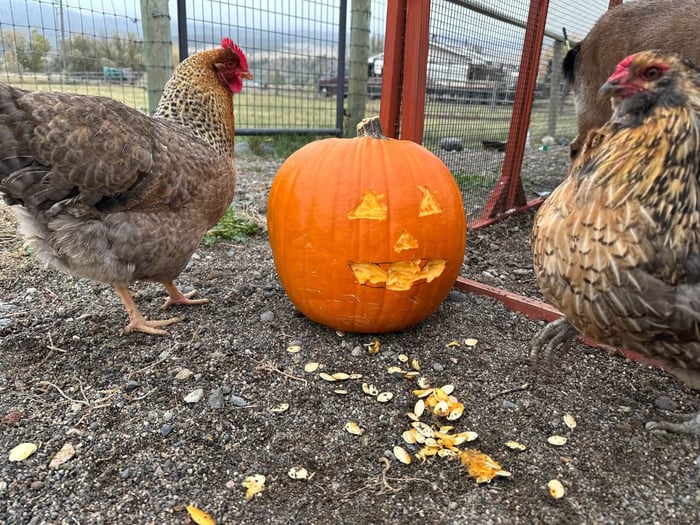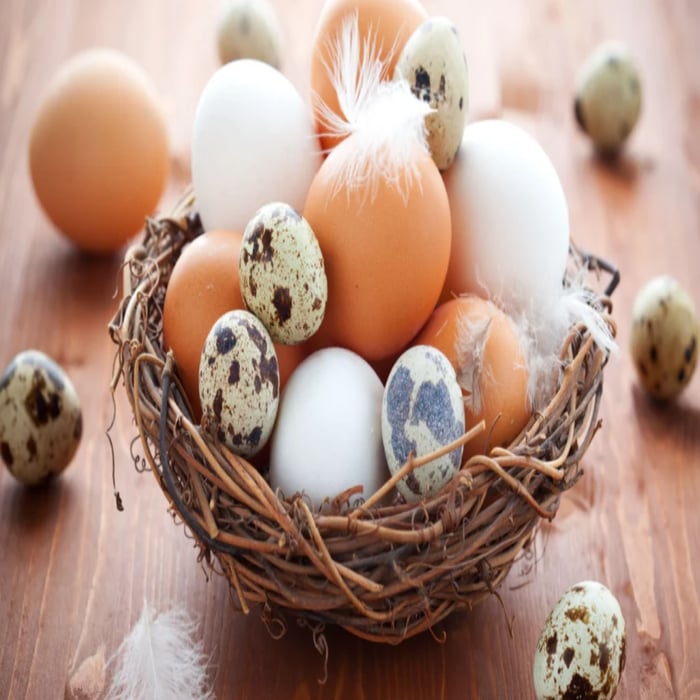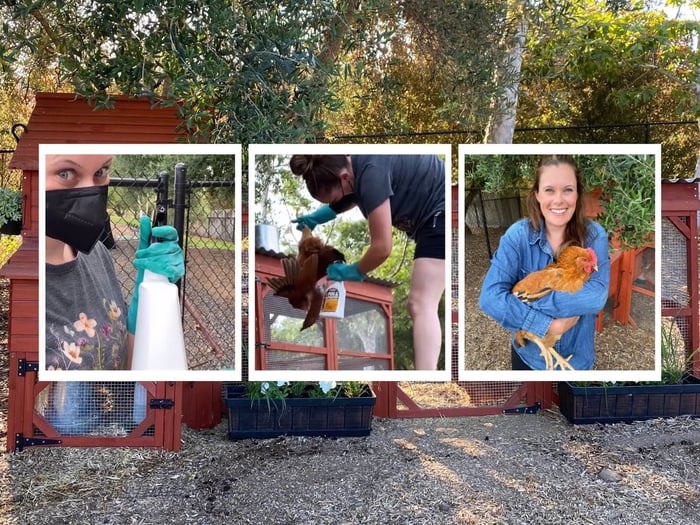Table of Contents
Fall Laying Habits: What's Normal and What's Not
When the leaves begin to change and the days grow shorter, many backyard chicken keepers notice something about their hens: the egg basket starts to look a little lighter. For those new to raising chickens, this can be worrying. After all, we come to expect a steady rhythm of fresh eggs throughout spring and summer. But fall brings unique challenges and natural changes to the way chickens lay eggs.
In this guide, we’ll explore what’s normal in the fall egg-laying cycle, what might be cause for concern, and how to best support your hens through the season.
Why Fall Affects How Chickens Lay Eggs
To understand fall laying habits, it helps to know why hens slow down this time of year. Chickens are strongly influenced by daylight. Egg production is closely tied to the pineal gland, which is light-sensitive and regulates the release of hormones that trigger ovulation. During the longer days of spring and summer, hens receive 14–16 hours of daylight, the sweet spot for strong, consistent laying.
In fall, shorter days mean less light—and that natural reduction signals hens to take a break. Chickens lay eggs based on daylight cues, not necessarily the temperature. As the sun sets earlier and rises later, their bodies interpret it as a time to conserve energy.
For homesteaders and suburban chicken keepers alike, understanding this seasonal rhythm is the first step in learning what’s normal and what’s not.
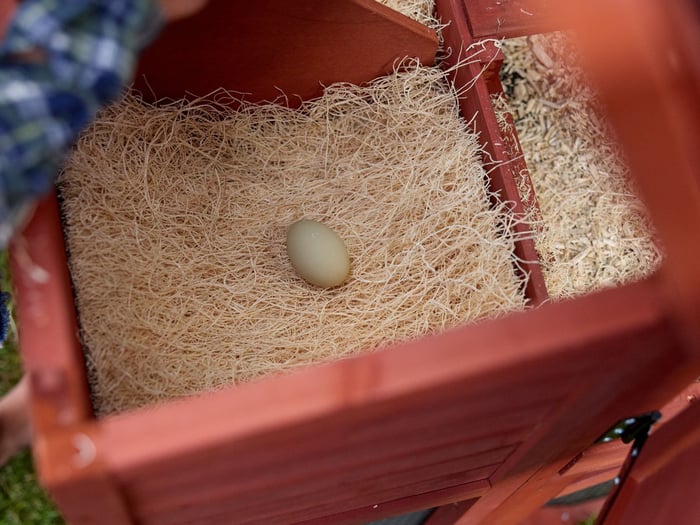
The Role of Molting in Fall Egg Laying
Another key reason egg production slows down in fall is molting. Molting is the natural process of shedding old feathers and growing new ones. This usually happens once a year, and most commonly in late summer or fall.
Feather growth requires a tremendous amount of protein and energy. Because of that, hens often redirect resources from egg production toward feather replacement. It’s completely normal to see fewer eggs—or even none at all—while hens are molting.
Some signs your chickens are in molt include:
Bare patches or scattered feather loss.
A “porcupine” look as new quills push through.
Reduced activity and less energy.
A noticeable drop in how often chickens lay eggs.
This phase can last anywhere from 4 to 12 weeks depending on the bird, and once complete, hens generally return to laying at a steadier pace—though in fall, daylight still plays a role.
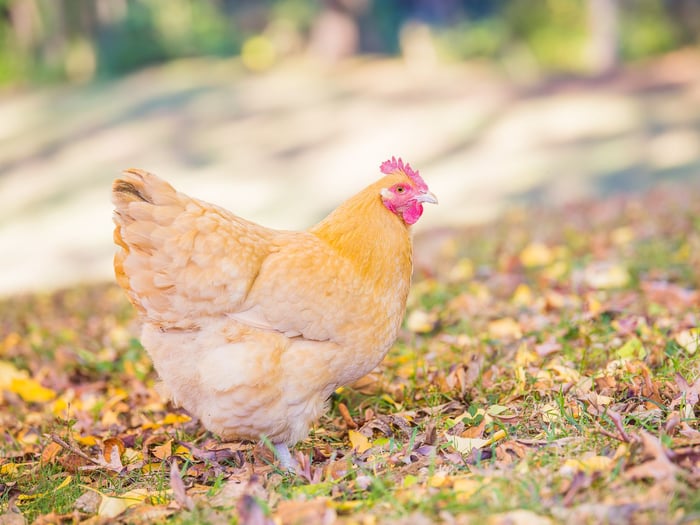 What’s Normal for Chickens in Fall
What’s Normal for Chickens in Fall
It’s important to set realistic expectations when it comes to how chickens lay eggs in the fall. Some common, normal patterns include:
Fewer Eggs Overall
Most hens will lay less frequently. Instead of daily, you might see eggs every other day—or even just a couple per week.Pauses in Laying During Molt
If your hens are molting, don’t be surprised if egg laying stops entirely for several weeks. This is normal and allows them to focus on regrowing feathers.Slightly Different Egg Quality
During seasonal transitions, you may notice smaller eggs or shells that are a bit lighter. As long as this is occasional, it’s not a red flag.Younger Birds Still Laying Well
Pullets (young hens that just started laying) often keep producing through fall and even winter. Their first year is usually the most productive.Older Hens Slowing Down
Hens over two years old are more sensitive to shorter days and will often take longer breaks.
All of these behaviors fall within the normal range of how chickens lay eggs when the seasons shift.
What’s Not Normal
While some decline in egg production is expected in fall, there are times when you should look closer. Here are signs that something else might be going on:
Sudden Stop in Laying Outside of Molt
If your hens stop laying abruptly without signs of molting, it may point to stress, parasites, or illness.Odd Egg Shapes or Consistently Weak Shells
Occasional shell issues can be seasonal, but frequent deformities may signal nutritional imbalances.Visible Illness
Lethargy, loss of appetite, or unusual droppings paired with a decline in laying are not normal fall patterns.Predator Disturbances
Stress from raccoons, dogs, or even hawks hanging around can scare hens and reduce laying.No Return to Laying After Molt
Once daylight is steady and molt has passed, hens should return to laying, though at a slower pace. If not, further investigation may be needed.
Being able to tell the difference between natural seasonal changes and red flags will keep your flock healthy and your egg basket as full as possible.
How to Support Your Flock in Fall
Even though you can’t fight nature, there are steps you can take to help your chickens lay eggs more consistently through fall.
1. Manage Light Exposure
Many backyard chicken keepers add supplemental light in the coop. A simple timer with an LED bulb can extend daylight to 14–16 hours, keeping production higher. Just make sure to add morning light rather than evening to avoid disrupting roosting habits.
2. Boost Protein During Molt
Since hens redirect protein toward feather growth, offering protein-rich treats like mealworms, black soldier fly larvae, or scrambled eggs can help them recover faster and return to laying.
3. Ensure a Balanced Diet
A layer feed with the right calcium levels is essential year-round. In fall, add oyster shell or crushed eggshells to strengthen shells when chickens lay eggs after molt.
4. Reduce Stress
Predators, overcrowding, or drastic changes in environment can stress hens. A calm coop means healthier birds and more consistent egg production.
5. Keep Coops Clean and Dry
Fall often brings damp conditions. Make sure bedding is fresh, ventilation is strong, and nesting boxes are dry to encourage hens to lay where they feel safe.
6. Accept the Natural Rhythm
Remember, hens aren’t factory machines. Part of the joy of backyard chickens is learning their seasonal rhythms. Sometimes fewer eggs is simply nature’s way of giving them rest.
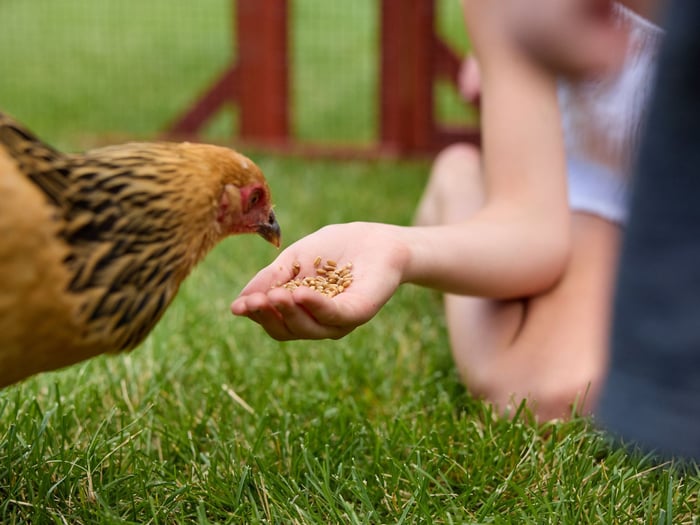
Planning for Fall Egg Collection
If you rely on eggs for your household, it’s smart to plan ahead for the fall slowdown. Here are some strategies:
Preserve Extra Summer Eggs: Freeze lightly scrambled eggs or water-glass fresh eggs in lime solution to save for fall baking.
Add Pullets Each Year: A staggered flock ensures that when older hens slow down, younger ones are hitting peak production.
Diversify Your Flock: Some breeds, like Australorps and Rhode Island Reds, are known for continuing to lay decently through shorter days.
By preparing in advance, you can balance the natural ups and downs of how chickens lay eggs throughout the year.
Supporting Chickens Through Seasonal Shifts
Fall is a time of transition not only for us, but for our flocks. Instead of worrying about the reduced output, it can be a chance to focus on flock health, maintenance, and preparation for the colder months ahead.
Take the time to:
Check coop insulation and drafts.
Refresh feeders and waterers.
Stock up on high-quality feed and supplements.
Give your hens a little extra care while they’re molting.
By supporting your hens during this season, you set them up for a healthier, stronger return to laying in the months to come.
Final Thoughts
When fall rolls around, it’s completely normal to see a shift in how chickens lay eggs. Shorter days and the energy demands of molting mean fewer eggs, lighter baskets, and a slower pace in the coop. While some keepers choose to extend daylight with artificial light, others allow their hens to follow their natural rhythm.
What matters most is recognizing the difference between normal seasonal changes and signs of trouble. With the right nutrition, environment, and patience, your flock will thrive—and when the days lengthen again, you’ll find those egg baskets filling up once more.
FAQs
Why do chickens lay eggs less in the fall?
Shorter daylight hours reduce hormone production, and molting redirects energy away from laying, making fall a natural slowdown.
Should I add artificial light to keep chickens laying eggs?
This is up to you, and there are many different opinions on this! Some keepers add 2–4 hours of supplemental morning light to maintain steady egg production, though some prefer a natural rest period.
How long do hens stop laying during molt?
Molting can last anywhere from 4 to 12 weeks depending on the bird, during which egg production may pause completely.
Is it normal for older hens to stop laying in fall?
Yes. Older hens slow down more dramatically and may take longer breaks than younger pullets.
What can I feed my chickens to help them lay eggs in fall?
Provide a balanced layer feed, extra protein during molt, and calcium sources like oyster shell or crushed eggshells to support health and shell quality.


.png)
